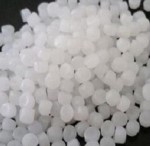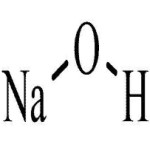Sodium Hydroxide SDS of Suppliers Exporters, Manufacturers
Caustic Soda or Sodium Hydroxide
CAS Number: 1310-73-2 Pellets Powder Pearls USP NF BP Ph Eur Reagent FCC Food Grade Suppliers Exporters, Manufacturers

Please visit Main Page of Caustic Soda or Sodium Hydroxide USP NF BP Ph Eur EP Reagent FCC Food Grade Manufacturers.
Sodium Hydroxide or Caustic Soda SDS, Safety Data Sheet
MSDS Sheet 14-May-22
Section 1: Product Identification
Product Name & Other Names: Caustic soda or Sodium hydroxide Solid, Flakes, Pellets.
CAS No.: 1310-73-2
EINECS EC Number: 215-185-5
Relevant uses and uses advised against (if any): Laboratory chemicals, Manufacture of substances. For Industrial use.
Details of the supplier of the safety data sheet: As per letter head.
Section 2: Hazard Identification
GHS, Globally Harmonized System Classification in accordance with 29 CFR 1910
Classification according to Regulation (EC) No 1272/2008
Corrosive to Metals Category 1, H290
Skin corrosion/irritation Category 1A, B, C, H314
Hazardous to the aquatic environment, acute hazard Category 3, H402
Labeling according to Regulation (EC) No 1272/2008
GHS Label Elements  Corrosive |
Signal Words: Danger
Hazard statements:
H290: May be corrosive to metals
H314: Causes severe skin burns and eye damage
H402: Harmful to aquatic life.
Precautionary statements:
P234: Keep only in original container.
P260: Do not breathe dust/fume/gas/mist/vapors/spray.
P264: Wash … thoroughly after handling.
P273: Avoid release to the environment.
P280: Wear protective gloves/protective clothing/eye protection/face protection.
P312: Call a POISON CENTER or doctor/physician if you feel unwell.
P362: Take off contaminated clothing and wash before reuse.
P301+330+331: IF SWALLOWED: Rinse mouth. Do NOT induce vomiting.
P303+361+353: IF ON SKIN (or hair): Remove/Take off immediately all contaminated clothing. Rinse skin with water/shower.
P305+351+338: IF IN EYES: Rinse cautiously with water for several minutes. Remove contact lenses if present and easy to do – continue rinsing.
P390: Absorb spillage to prevent material damage.
P404: Store in a closed container.
Section 3: Composition / Information on Ingredients
Product Name & Other Names: Caustic soda or Sodium hydroxide Solid, Flakes, Pellets.
CAS No.: 1310-73-2
EINECS EC Number: 215-185-5
Dilution, if any is with water.
Section 4: First Aid Measures
Always seek medical attention after first aid measures are provided.
Eye Contact: Check for and remove any contact lenses. In case of contact, immediately flush eye with plenty of water for at least 15 minutes. Cold water may be used. Get medical attention immediately.
Skin Contact: Immediately flush skin with plenty of water for at least 15 minutes while removing contaminated clothing and shoes. Call a physician, immediately. Wash clothing before reuse.
Ingestion: If swallowed, do not induce vomiting unless directed to do so by medical personnel. Never give anything by mouth to and unconscious person. Loosen tight clothing such as a collar, tie, belt, or waistband. Get medical attention immediately.
Medical Conditions Aggravated by Exposure: Repeated exposure of the eyes to a low level of Sodium hydroxide dust can produce eye irritation. Repeated skin exposure can produce local skin destruction, or dermatitis. Repeated inhalation of dust can produce varying degree of respiratory irritation or lung damage.
Section 5: Fire Fighting Measures
Flash Point: NA
Fire Extinguishing Media: Adapt extinguishing media to the environment. Use water spray, alcohol-resistant foam, dry chemical, or carbon dioxide.
Extinguishing Media Not recommended: None specified.
Unusual Fire and Explosion Hazards: Flammable hydrogen gas may be produced on prolong contact with metals such as aluminum, tin, lead and zinc.
Hazardous combustion products: Oxides of sodium.
Special Information: In the event of a fire, wear full protective clothing and NIOSH-approved self-contained breathing apparatus with full face piece operated in the pressure demand or other positive pressure mode. At high temperatures under fire conditions, it may produce toxic or irritating fumes. Fire-extinguishing work is done from the windward and the suitable fire-extinguishing method according to the surrounding situation is used.
Section 6: Accidental Release Measures
Personal precautions, protective equipment, and emergency procedures: Avoid breathing dust/fumes/gas/mist/vapors/spray. Use individual protective equipment (waterproof boots, suitable protective clothing, safety glasses, etc.). Do not approach facing the wind.
Environmental precautions: Do not let the product enter drains, soil, or water sources.
Methods and materials used for containment cleanup procedures and Storage: Do not inhale vapors, mist, or gas. Avoid dust formation. Contain spilled material. Cover with an inert, non-combustible absorbent material, (e.g., sand, earth, diatomaceous earth, vermiculite). Use a shovel to put the material into a convenient waste disposal container. Finish cleaning by spreading water on the contaminated surface and allow to evacuate as per law. Small quantities of liquid spill may be neutralized with acid solution.
Section 7: Handling and Storage
Precautions for safe handling: Apply according to good manufacturing and industrial hygiene practices. Ensure proper ventilation. In case of insufficient ventilation, wear suitable respiratory equipment. Wash thoroughly after handling. Do not drink, eat, or smoke while handling. Avoid contact with skin, eyes, and clothing. Minimize dust generation. Avoid breathing dust/fumes/gas/mist/vapors/spray. Use individual protective equipment (waterproof boots, suitable protective clothing, safety glasses, etc.). Prevent any contact with hot surfaces.
Conditions for safe storage, including any incompatibilities: Store in cool, dry, and ventilated area away from heat sources and protected from sunlight in tightly closed original container. Keep air contact to a minimum. Store protected from heat, sparks and ignition sources and incompatible materials. Do not store with incompatible materials like strong oxidizing agents, acids, chlorinated hydrocarbons, metals, and organic materials. Avoid moisture. Always add the caustic to water while stirring, never the reverse. Do not store with aluminum or magnesium.
Section 8: Exposure Controls / Personal Protection
Components with workplace control parameters
Derived No Effect Level (DNEL)
Application Area: Workers, Consumers
Exposure routes: Inhalation
Health effect Long-term local effects: 1 mg/m3
USA ACGIH: 2 mg/m³ ACGIH Ceiling (mg/m³)
USA OSHA: 2 mg/m³ OSHA PEL (TWA) (mg/m³)
British Columbia: 2 mg/m³ OEL Ceiling (mg/m³)
Engineering Controls Ventilation required: Sodium hydroxide should be handled or transferred in an approved fume hood or with adequate ventilation.
Ventilation System: A system of local and/or general exhaust is recommended to keep employee exposures as low as possible.
Personal Respirators (NIOSH Approved): For conditions of use where exposure to dust or mist is apparent and engineering controls are not feasible, a particulate respirator may be worn.
Skin Protection: Wear protective gloves and clean body-covering clothing.
Eye Protection: Use chemical safety goggles and/or full-face shield where dusting or splashing of solutions is possible. Maintain eye wash fountain and quick-drench facilities in work area.
Other Control Measures: Maintain good housekeeping in work area. Handle in accordance with good industrial hygiene and safety practice.
Section 9 Physical and Chemical Properties
Appearance and Physical State: White Solid (flakes, pellets, powder or granular)
Odor (threshold): Odorless.
Odor threshold: No data found.
pH: 13-14 at 50gm/liter
Relative density: around 2.13 for dry material.
Melting Point: 318C (604F)
Boiling Point: 1390.04C (2534.1F)
Flash point: No data found.
Auto-ignition temperature: No data found.
Decomposition temperature: No data found.
Upper/lower flammability or explosive limits: No data found.
Vapor pressure: No data found.
Vapor density: No data found.
Evaporation rate: No data found.
Flammability (solid, gas): No data found.
Partition coefficient: n-octanol/water: No data found.
Solubility in Water: Soluble.
Viscosity: No data found.
Molecular Weight: 40.00
Chemical Formula: NaOH
Section 10: Stability and Reactivity
Stability: Sodium hydroxide is stable under ordinary conditions of use and storage. Very hygroscopic. Absorbs atmospheric CO2.
Reactivity: Exothermic reaction with water. Violent exothermic reaction with strong acids. Reacts with some metals to release hydrogen.
Conditions to Avoid: Contact with moisture may generate sufficient heat to ignite surrounding combustible material.
Materials to Avoid (Incompatibility): Water, acids, chlorinated hydrocarbons, oxidizing agents, metals, and organic materials.
Hazardous Decomposition Products: None indicated.
Hazardous Polymerization: Will not occur.
Section 11: Toxicological Information
Results of component toxicity test performed:
1350 mg/kg skin-rabbit LD50;
104-340 mg/kg oral-rat LD50;
40 mg/kg intra peritoneal-mouse
LD50; 500 mg/kg oral-rabbit LDLo.
This product is not classifiable as to its carcinogenicity based on its IARC, ACGIH, NTP, or EPA classification.
Tests on laboratory animals indicate material may produce adverse mutagenic effects.
Human experience: Extremely hazardous in case of eye contact ( corrosive). Causes severe eye burns. Extremely hazardous in case of skin contact (corrosive). Skin contact produces severe burns. Hazardous in case of skin contact (permeator). Extremely hazardous in case of inhalation (lung corrosive). Hazardous in case of inhalation. Extremely hazardous in case of ingestion. May be fatal if swallowed. This product does not contain any compounds listed by NTP or IARC or regulated by OSHA as a carcinogen.
Section 12: Ecological Information
Toxicity to fish:
LC50 - Gambusia affinis (Mosquito fish) - 125 mg/l - 96 h
LC50 - Oncorhynchus mykiss (rainbow trout) - 45,4 mg/l - 96 h
Toxicity to daphnia and other aquatic invertebrates: Immobilization EC50 - Daphnia - 40,38 mg/l - 48 h
This substance does not meet the criteria for classification as PBT or vPvB.
Section 13 Disposal Considerations
RCRA 40 CFR 261 Classification: Material does not have an EPA Waste Number and is not a listed waste.
Section 14: Transportation Information
DOT USA, TDG Canada & ADR/RID Europe:
Proper shipping name: Sodium Hydroxide, solid
Hazard Class: 8
Packaging group: II
UN Number: UN1823
IATA/ICAO:
Proper shipping name: Sodium Hydroxide, solid
Hazard Class: 8
Packing group: II
UN Number: UN1823
IMO/IMDG:
Proper shipping name: Sodium Hydroxide, solid
Class: 8
UN Number: UN1823
Packing group: II.
Section 15: Regulatory Information
USA:
California Proposition 65: Not listed.
SARA 311/312 Hazards: See section 2.
Section 16: Other Information
DISCLAIMER: The information and recommendations set forth herein are presented in good faith and believed correct as of the date hereof. It is compiled from various sources, and it is not necessarily all inclusive nor fully adequate in every circumstance. In addition, these suggestions should not be confused with nor followed in violation of applicable laws, regulations, rules, or insurance requirements applicable. This SDS MSDS sheet is intended only as a guide to the appropriate precautionary handling of the material by a professionally trained person using this product. Individuals receiving the information must exercise their independent judgment in determining its appropriateness for a particular purpose. This shall not constitute a guarantee for any specific product features and shall not establish a legally valid contractual relationship. In no case shall our company be liable to loss or damages by the product user.

Please visit Technical Data Sheet of Caustic Soda or Sodium Hydroxide USP NF BP Ph Eur EP Reagent FCC Food Grade Suppliers.
Caustic Soda or Sodium Hydroxide Pellets Powder Pearls CAS Number 1310-73-2 & Sodium Nitrate CAS Number 7631-99-4 Supplier Exporter, Manufacturer:
Annie Chemie P Ltd
Mumbai 4000010, INDIA
With Agents and offices in UAE, USA, Europe.
e-mail: info@anniechemie.com
Copyright and Usual Disclaimer is Applicable.
June 2, 2025
Exporters to USA, Canada, UK, Europe, UAE, Nigeria, Algeria, Turkey, Mexico, Brazil, Chile, Argentina, Australia, Dubai etc.
Perfection is made up of small things and that is a big thing.
